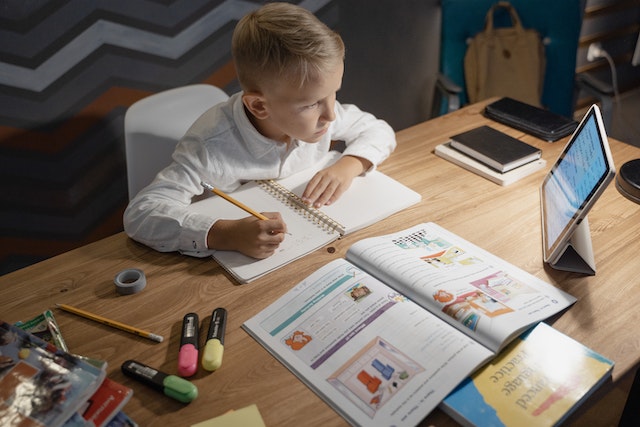Writers need to be able to daydream and let their imaginations flow. This is why regularly giving them screen-free time is important, where they shut out the “voices” of TV and the internet so they can think, feel, dream, and create.
Using original art is another great way to help improve creative writing skills. Here are some ways to incorporate it into your classroom or home.
Observation
Children need many opportunities to explore and experiment with materials that promote creativity. They should be allowed to do so independently and at their own pace, an essential part of the creative process.
Provide kids with various writing prompts, such as funny signs on the street or interesting pictures in magazines. This will help them overcome their fear of starting to write and can also teach them how to observe and find details in the world around them.
Kids need a rich vocabulary to develop their creative writing skills. Reading various books and listening to stories read aloud will expose them to various words and concepts. They can then take these words and apply them to their creative work.
Let kids brainstorm ideas before they start to write. For example, they might draw a whole page of sketches before writing anything down. Or they might cover a whiteboard with quotes and main ideas, combining and moving them around until they see a structure emerging for a piece of writing.
Interpretation
When children respond to art, they connect it with their experiences and imagination. This is called interpretation. Children must learn to think creatively to be successful at this. This requires a flexible thinking process where they move forward and backward thinking, encounter barriers, and then return to their idea.
Kids can practice this process through writing and illustration method. They use pictures to generate ideas, provide details and serve as a plan for their writing. For example, a student might write about a picture of a beach and then describe what the ocean looks like and what he might do when swimming there.
Allowing time to observe their environment, journal, and ask open-ended questions can help students develop creative thinking skills. Often, kids don’t want to share their creative writing because it doesn’t look “right.” But it is right! It is their story. Let them tell it! It will only improve with more practice.
Collaboration
Creative writing skills help students become better problem-solvers, innovators, and resourceful thinkers. As such, it’s important to incorporate these skills throughout classroom experiences.
One way to support these skills is through collaborative learning formats. For example, try creating pods or a U-shaped layout that allows kids to work together instead of lining up desks. Collaboration also encourages a sense of community and that everyone can contribute to a project.
Another way to foster creativity is through reading and storytelling. Exposing children to literature can help develop their ability to mimic and adopt ideas and styles they encounter and increase their vocabulary. Additionally, asking open-ended questions that require thought and imagination can help children problem-solve in new ways. Inviting tasteful humor into the classroom can also encourage out-of-the-box thinking.
Transmediation
Many creative experiences are self-directed, but some children need ideas, suggestions, or scaffolding to guide their thinking. Supporting their creative writing by providing prompts that use their interests, backgrounds, life experiences, and cultures helps them build vocabulary and understand how stories develop.
It can also be helpful for kids to brainstorm before they write. For example, if they are working on picture writing, letting them scribble all over the whiteboard with different arrows and numbers or covering the wall in Post-it notes with quotes and main ideas can help them see patterns and organize their ideas.
It’sIt’s important to give kids the time they need to work on projects. Trying to squeeze them into a typical 50-minute school period can hinder their progress and discourage risk-taking or experimentation. Consider scheduling double periods for a more dramatic change to allow for more project time.



